Commercial & Residential Water Damage Mitigation Services
When you call Insurance Restoration Services, you are calling water damage professionals certified by the Institute for Inspection, Cleaning, and Restoration Certification (IICRC). You are calling a restoration company with years of experience and state-of-the-art tools to handle the most challenging water damage situations. You are calling THE one-stop water damage restoration company who can respond to 24-hour water damage emergencies.
Water Damage Prevention
- Control the humidity in your home or business. If it's too high, get a dehumidifier. If it's excessively high, get professional help.
- Check plumbing for leaks. Places to check include sink drain, behind the refrigerator, under dishwasher, exposed pipes in basement, and outside faucet.
- If you have a sump pump, you should get a water overflow alarm.
- Keep your gutters flowing. Clean them regularly.
- Make sure your yard slopes down and away from your house so water does not accumulate at the foundation.
- Inspect your shingles every year. Replace before more serious damage occurs.
- Check hot water heater for leaks or signs of rust. If you find rust at the base, and you've had it a while, consider buying a new one.
Helpful Tips On What To DO Until Help Arrives
Do:
- Remove as much excess water as possible by mopping and blotting
- Wipe excess water from wood furniture after removal of lamps and table top items
- Remove and prop wet upholstery and pillow cushions for even drying
- Place aluminum foil or wood blocks between furniture legs and wet carpeting
- Turn air conditioning on for maximum drying in summer
- Remove Oriental rugs or other colored rugs from wet wall-to-wall carpeting
- Remove valuable paintings and art objects to a safe, dry place
- Open and place luggage, in sunlight to dry, if possible
- Gather loose items, toys, etc. from floors
Don't
- Leave wet fabrics in place; dry as soon as possible. Hang furs and leather goods to dry separately at room temperature.
- Leave books, magazines or other colored items on wet carpets or floors
- Use your household vacuum to remove water
- Use TVs or other household appliances while standing on wet carpets or floors, especially not on wet concrete floors
- Turn on ceiling fixtures if ceiling is wet, and keep out of rooms where ceilings are sagging from retained water
Water Damage Restoration Equipment
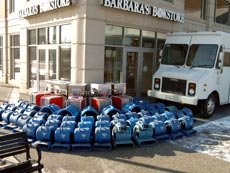
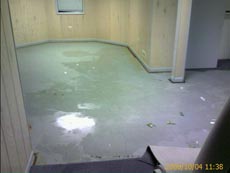
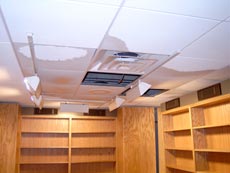
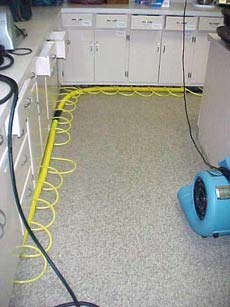
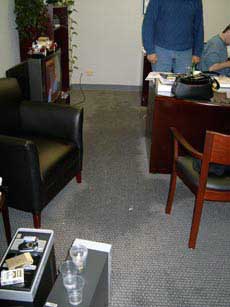

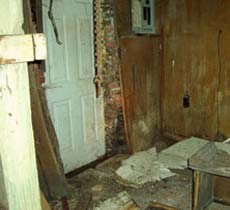
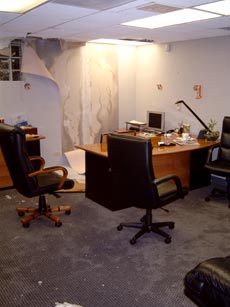


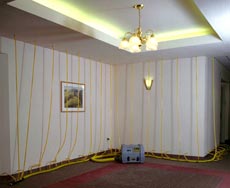
- Powerful truck mounted and portable extraction units perform efficient water removal.
- Heavy-duty submersible and gas-powered pumps are used for continuous pumping high volumes of water.
- Moisture detectors, hygometers and other meters to measure the extent of moisture saturation. Necessary repairs may then begin when the area is determined to be free of excess moisture.
Hardwood Floor Drying Equipment
- Hardwood floor drying machines that are capable of reducing or eliminating cupping hardwood.
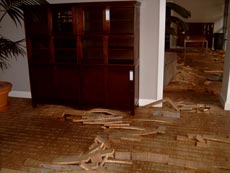
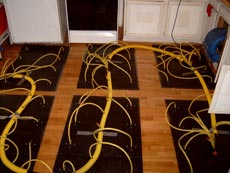
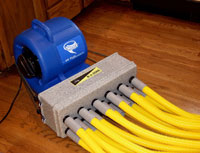
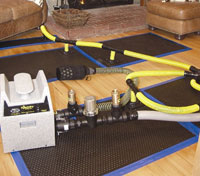
Ultra Dry Freeze-Drying
- Ultra Dry Freeze-Dryer is used to restore postcards, stamps, documents, books, and photos.
DO NOT separate pages - put affected items in your freezer and call our office for pickup.
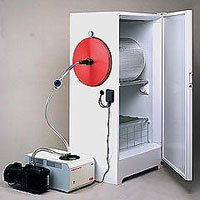
Document Restoration with Vacuum Freeze Drying
Because items such as important and sensitive documents, books, heirlooms and other keepsakes are often of great value, the ability to preserve or restore them should be of utmost concern to insurance providers. In many cases they can mean just as much to the insured as the damage to the structures and premises themselves. In some cases they can mean even more. That's why you need Insurance Restoration Services. 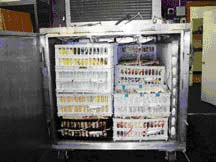 We use state-of-the-art technology in our equipment to effectively and efficiently preserve water damaged documents and valuable keepsakes. It is our vacuum freeze-drying capability that helps set us apart from other restoration companies in the industry
We use state-of-the-art technology in our equipment to effectively and efficiently preserve water damaged documents and valuable keepsakes. It is our vacuum freeze-drying capability that helps set us apart from other restoration companies in the industry
Freeze Drying Process
The freeze-drying process is basically defined as a process where ice is transformed from a solid state to a gaseous state - then recollected as a solid without returning to liquid form. The concept was put to use effectively during World War II by the U.S. Government to store human plasma. Later, the freeze-drying process was introduced to the food and drug industries who saw the huge benefits of its preserving qualities. The process has since gained widespread popularity among certain industry segments as a means to preserve and recover valuable documents damaged by water.
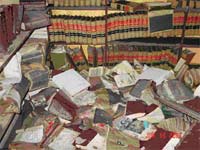
Water damaged books and documents may be fully restored with the freeze dry process.First and foremost, the items to be preserved with freeze-drying are frozen solid. This maintains their integrity, their shape and their form. In this frozen state, they can be stored indefinitely without risk of additional damage. Other drying methods, like vacuum drying, simply don't afford this significant benefit. Drying under vacuum alone takes more time and allows liquid to remain until evaporation. Inks and dyes can still run, stick and stain. Printed pages and other materials can still expand and distort - and rot - where liquid still exists.
- Control - freezing items solid stabilizes them until freeze-drying process begins, even at a later date.
- Economy - no need to "rush to dry" and incur additional expenses before assessing real damage. And, it's done right the first time.
- Prevention - freeze-drying is the performance proven method to virtually eliminate additional damage to items caused by the liquid present during other drying techiques.
- Results - water damaged items are preserved as close to their original state as possible in today's restoration technology.
What Can Be Freeze Dry Restored?
- Important Business Records
- Blueprints
- Medical Records
- Valuable Artwork
- Historical Print Material
- Heirlooms and Keepsakes
Hi-Tech Drying Equipment
- Industry-grade dehumidifiers reduce humidity levels, producing dry air and minimizing secondary water damage to contents and materials.
- High-speed air movers create airflow across walls, carpets, pads, and furniture, evaporating moisture.
- Drying equipment controls temperature and humidity, helping prevent swelling and warping of floors, walls, and furniture.
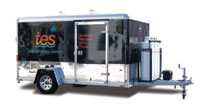
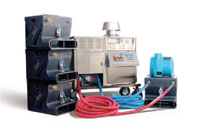
Sanitizing Agents, Germicides, & Anti-Microbial Treatments
- Deodorization products control odors emanating from microorganisms which flourish in excessive moisture
- Disinfection products arrest the growth of bacteria, fungi, mildew, and other harmful microorganisms
